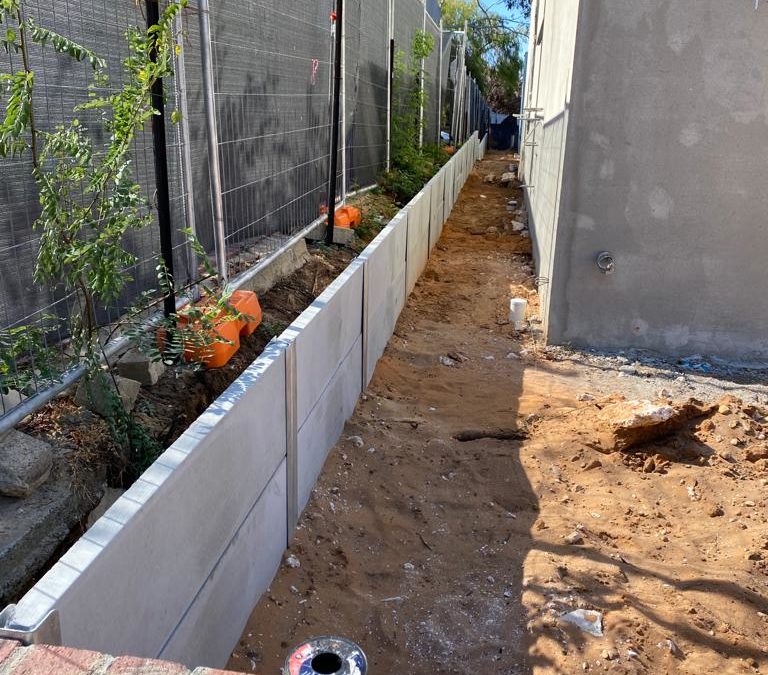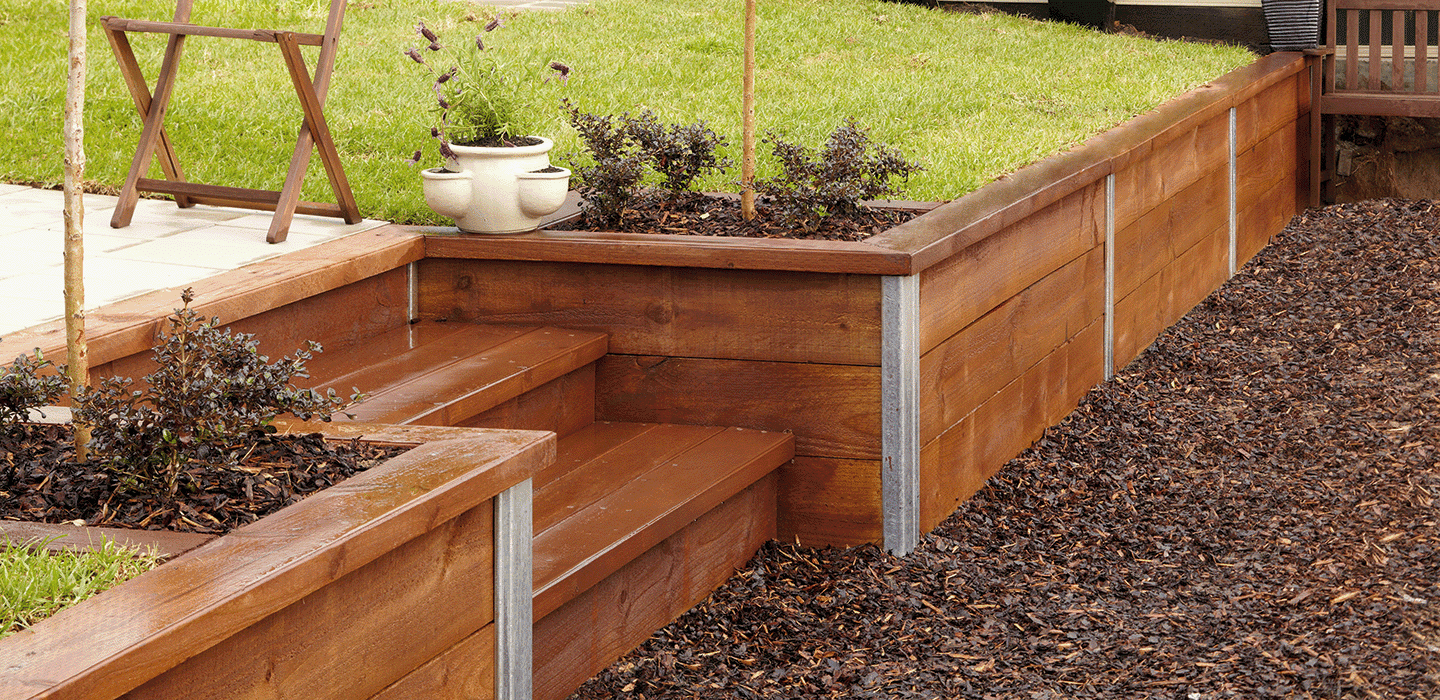Enhancing Building Stability: The Role of Retaining Walls in Soil Retention and Disintegration Control
Preserving walls stand as quiet guardians, playing an important role in soil retention and disintegration control. By checking out the nuances of various kinds, design factors to consider, building and construction techniques, and upkeep pointers connected with retaining wall surfaces, a much deeper understanding of their pivotal duty in improving residential property stability arises.
Importance of Retaining Walls in Security
The importance of preserving walls in making certain stability within landscapes can not be overemphasized. Retaining wall surfaces play an essential duty in keeping back soil, protecting against erosion, and producing level surface areas in sloped areas. By supplying structural support, maintaining wall surfaces help to rearrange side pressure brought on by dirt, preventing landslides and slippage. Along with boosting the aesthetic charm of a residential or commercial property, preserving walls add to the total safety and capability of exterior areas.
Preserving wall surfaces are particularly important in uneven or hilly terrains where soil erosion is a common occurrence. Without adequate support, soil erosion can lead to the degradation of landscapes, jeopardizing the stability of structures and positioning risks to residents. Keeping walls act as barriers, maintaining the dirt and stopping it from moving downhill during heavy rainfall or various other ecological stress factors.
Moreover, keeping walls offer long-term advantages by minimizing upkeep expenses related to soil disintegration and land instability. By spending in well-designed retaining wall surfaces, residential or commercial property owners can make certain the long life and sustainability of their landscapes while promoting a safe and aesthetically attractive environment.

Kinds of Retaining Walls for Erosion Control
Commonly made use of in landscaping and civil engineering tasks, different kinds of preserving wall surfaces work as efficient solutions for disintegration control in diverse surface conditions. Gravity retaining wall surfaces are durable structures that count on their weight to resist the stress of the soil behind them. They are ideal for low to medium elevation applications and are generally constructed from concrete or rock. Cantilever retaining wall surfaces, on the other hand, are created with a thicker base and utilize a bar arm to endure the dirt pressure. These wall surfaces are typically made use of in areas where room is limited.
For taller wall surfaces or where area is a restraint, secured preserving wall surfaces are frequently utilized. When selecting the suitable type of keeping wall surface for disintegration control, aspects such as soil structure, wall surface height, and site problems should be carefully taken into consideration to ensure durable security and performance.
Style Considerations for Soil Retention
Incorporating the concepts of architectural engineering and environmental sustainability is important when considering design aspects for reliable dirt retention remedies. When developing for soil retention, it is important to evaluate the details needs of the website, consisting of dirt structure, water drainage patterns, and incline stability. The height and area of the keeping wall surface are essential elements that influence the overall style. Engineers have to likewise consider the stress exerted by the preserved soil and prospective lateral lots to make certain the framework's security gradually.
Moreover, the product selection for the maintaining wall is important in boosting longevity and performance. Concrete, timber, gabion baskets, and all-natural stone their explanation are usual materials utilized in preserving wall building, each with its one-of-a-kind advantages and considerations. Correct water drainage mechanisms, such as weep holes and French drains pipes, ought to be incorporated right into the design to stop water accumulation behind the wall surface, which can bring about structural failure and erosion.
Building Strategies for Maintaining Wall Surfaces
When carrying out layout considerations for effective soil retention, the building methods for maintaining wall surfaces play a Your Domain Name crucial role in guaranteeing structural stability and long-lasting security. The success of a retaining wall mostly depends upon the building methods employed. One common technique is the gravity wall, which relies on the weight and mass of the wall itself to stand up to the stress of the preserved dirt. Gravity wall surfaces appropriate for reduced to tool heights and are relatively easy to construct. Retaining Walls Sunshine Coast.
Another commonly used building strategy is the cantilevered wall, which uses a concrete piece foundation that prolongs in reverse into the kept dirt. This style provides added security and is suitable for medium to high maintaining walls. For taller frameworks, strengthened soil techniques such as making use of geogrids or dirt nails can be utilized to enhance the wall surface's strength and security.

Upkeep Tips for Building Stability
To guarantee long-term residential property security, normal upkeep techniques are necessary for protecting the stability of keeping walls and preventing erosion issues. Cleansing the surface area of the maintaining wall surfaces can also aid keep their structural integrity by getting rid of dust, debris, and vegetation that can deteriorate the wall over time.
In enhancement to aesthetic evaluations click for more info and cleansing, it is necessary to check the water drainage systems connected with the retaining wall surfaces. Making sure that drains are free from obstructions and operating correctly can prevent water build-up behind the walls, which can bring about pressure and possible failing. Correctly operating drain systems are essential for handling water circulation and minimizing the risk of erosion.
Routinely keeping track of and keeping retaining wall surfaces according to these pointers can extend their life-span and contribute to the general security of the property.
Final Thought
Finally, keeping wall surfaces play an essential duty in improving building stability by protecting against soil erosion and maintaining dirt in place. By using various kinds of taking into consideration and keeping walls design and building and construction methods, homeowner can properly manage disintegration and maintain the stability of their land. Routine upkeep of retaining walls is necessary to make certain long-term stability and protection against erosion. Correctly constructed and preserved retaining walls are vital elements in protecting residential property security.
For taller walls or where space is a constraint, secured preserving wall surfaces are typically employed. These wall surfaces make use of cords or strips that are anchored right into the dirt or rock behind the wall to provide added support. When selecting the ideal type of preserving wall surface for erosion control, variables such as dirt composition, wall surface height, and website problems should be meticulously thought about to guarantee durable security and effectiveness.
One usual strategy is the gravity wall, which counts on the weight and mass of the wall itself to stand up to the pressure of the retained soil. Cleaning the surface of the retaining wall surfaces can also assist keep their structural honesty by eliminating dust, debris, and vegetation that might weaken the wall surface over time.